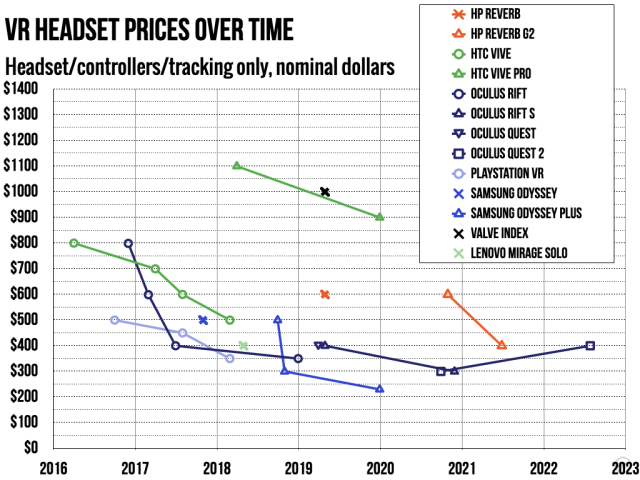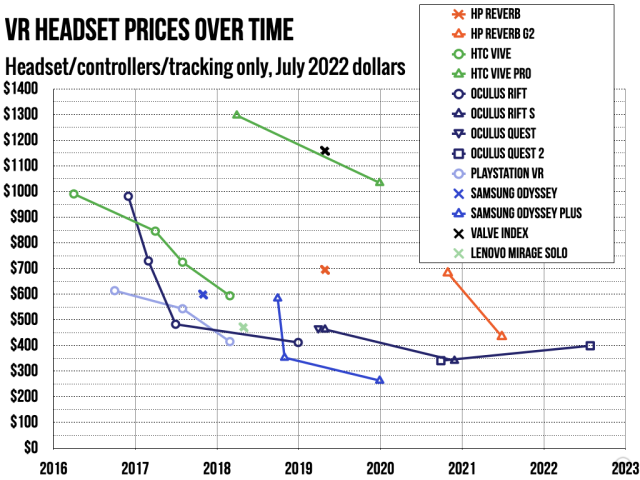
If there’s one rule about computer and video game hardware, it’s that prices always come down after launch. The Meta Quest 2 became the exception that proves the rule this week, as Meta announced a coming $100 price increase for the popular standalone VR headset, to $400.
The increase, which Meta blamed on “rising costs,” suggests the company may be trying to rein in subsidized hardware pricing that has contributed to nearly $1 billion in monthly losses for its virtual reality division in the most recent quarter.
But when you look at the short history of consumer-grade home virtual reality headsets, the Meta Quest 2 is still a historically cheap VR entry point, even after the price increase. That’s especially true when you account for inflation and the extra hardware needed to power most other comparable headsets on the market.
$400 ain’t what it used to be

To see how the Quest 2’s price shaped up, we gathered historical price data for a variety of popular headsets that offer full “six degrees of freedom” head and hand tracking (that eliminates cheaper options like the Samsung Gear VR and Oculus Go). We also included the cost of any hand-tracking controllers and external tracking hardware (when applicable), so the launch-era Oculus Rift doesn’t enter the picture until the launch of the $200 Oculus Touch controllers months later.
Ignoring the extra cost of the hardware needed to power all these “tethered” VR headsets, the $400 Quest 2 is right in the middle of the nominal historical price range for consumer level VR. While headsets like the Oculus Rift and HTC Vive launched in 2016 at prices around $800 (with controllers included), those prices quickly came down through 2017.
By 2018, most headsets were settling in a nominal price range of $300 to $500, with high-end exceptions like the HTC Vive Pro and Valve Index serving the “money is no object” portion of the market. And while value-minded consumers could find deals like a $229 Samsung Odyssey Plus in early 2020, $300 to $400 has been the lowest reasonable asking price for most VR headsets in recent years.

When you adjust for inflation, though, the Quest 2’s $400 price ends up looking much better, shifting to near the bottom-end of historical headset pricing. That might be surprising, considering that we’ve only had five or six years for inflation to chip away at the relative value of earlier headsets. But given how inflation has approached double-digit annualized rates in recent months, $400 today looks a lot different than it did even in the late 2010s.








